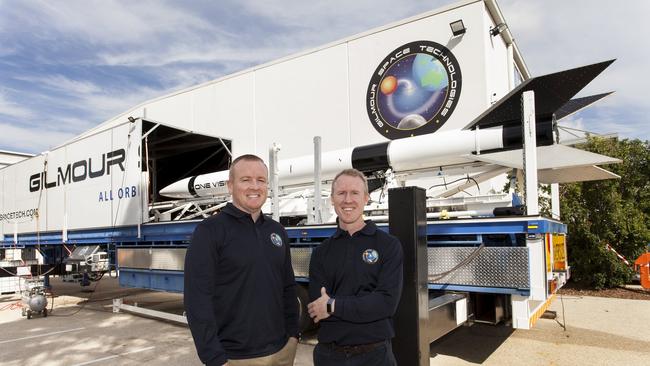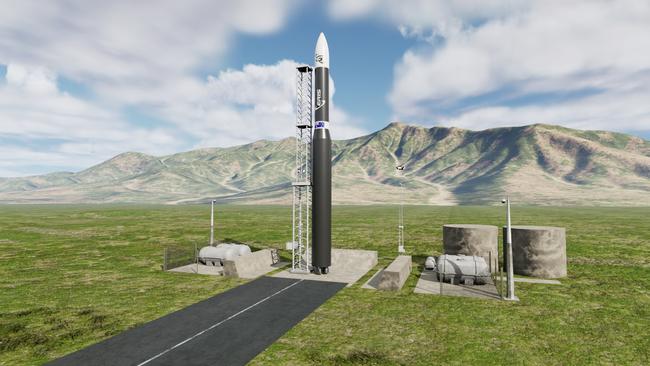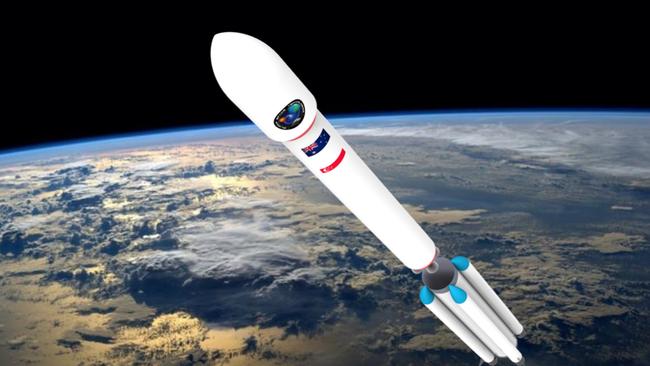Gilmour Space: Bowen rocket launches to revolutionise natural disaster responses
Brothers behind a new North Queensland rocket launch site say it will create jobs and tourism opportunities and have other major benefits across the state.
Whitsunday
Don't miss out on the headlines from Whitsunday. Followed categories will be added to My News.
The countdown to rocket launches from a new Whitsundays space facility is generating plenty of buzz for the spectacle they will create on the ground.
Not a lot has been said about the functions of the satellite technology rockets launching from the proposed Bowen Orbital Spaceport.
But it’s what they will actually do when they get into orbit from mid next year that is most fascinating.
One of the most exciting aspects of the multimillion dollar project is the potential to change the way we communicate, work, and manage life-threatening natural disasters.
Gilmour Space co-founder and CEO Adam Gilmour says satellites launching from Abbot Point, north of Bowen, could revolutionise responses to extreme weather events such as bushfires and floods, with unparalleled ability to detect, map and monitor threats in real-time as well as provide a reliable communication channel when others fail.

Mr Gilmour said Gilmour Space was in talks with two independent companies looking to put up fire detection satellites and a growing number of companies worldwide were working on the technology, as well as beta versions of portable satellite receiver dishes that connect to mobile phones.
“The idea is you’d have a receiver dish on top of your house that connects to your phone, a bit like a Wi-Fi hot spot, and when the normal communications systems get knocked out, you’ll still be able to access communications to the satellite – that could make a huge difference in cyclones or floods.”
In the case of fires: “You can have satellites with sensors on them such as infra-red that can detect a bushfire and because they're in space they have a much wider field of view than a bushfire spotting plane that might only have a 15 to 20 km radius it can see smoke coming from, and even then, you can’t tell how big the fire is.”
Mr Gilmour said there were already satellites performing these functions, but the more the better.
“The challenge is not so much around the technology, it’s more around the frequency or amount of satellites up in space and how many times they can fly over an area.
“The current problem when you have a small number of satellites that can detect fires, they might only come over Australia every four to five hours or more.
“The next generation is to put up 10 to 12 satellites that can fly over Australia every six to 10 minutes- that’s super fast timeliness in terms of spotting a bushfire and directing emergency services to combat it.”
Another application, already in use in the Northern Territory, is to track feral animal populations impacting the environment and agriculture productivity – something that could come in handy in the Whitsundays’ ongoing battle against an estimated 15,000 to 20,000 feral pigs.
“The main things are communications, observation, and the internet of things,” Mr Gilmour said.
“Satellites are multipurpose, so you can have different types of detectors or cameras looking for different things from the same satellite.”
More stories:
‘Repugnant’: Outrage over Collinsville school’s pig hunting fundraiser
YOUR SAY: Bowen residents weigh in on rocket launch site

Gilmour Space is in talks with satellite manufacturing companies around the world including SpaceX and OneWeb to make use of the new launch site and its uniquely advantageous geographical location.
“In terms of how many places you can go to into low earth orbit from Bowen, it’s significantly more than [NASA‘s primary launch centre] the Kennedy Space Centre.
“The closer you are to the equator, the more choices you have, and from a safety point of view, you have to be over the coast so you can fly out without going over towns and people on the ground.
“You’ve also got to look out for islands thousands of kilometres away, so you can’t go much further north than Bowen because you start getting into the island chains east of Papua New Guinea.”

The first launch from Bowen is planned for June/July 2022, with spectators encouraged to watch from vantage points including Flagstaff Hill.
Mr Gilmour describes the experience of watching a launch as “spectacular”, even from kilometres away.
“You hear this earth-shattering sound, this rumble – it hits you in the chest like a rock concert.”
He said that while the public will not have direct access to the launch site initially, there are hopes to offer tours and potentially even open a space museum further down the track.
For now, the company is moving through the approvals process to start building at the site, and recently joined with more than 30 other Australian organisations to submit a $150m federal government grant application to support the manufacturing of rockets and satellites for launches from Bowen.
“It’s all moving along and so far, so good.”
The ‘space future’ is here
Gilmour Space’s investment in Bowen represents the Whitsunday region’s entry into the global small satellite launch market, which is projected to grow to US$42.8b by 2028.
Greater Whitsunday Alliance CEO Kylie Porter says this means big opportunities for North Queensland, especially in the transition to a low-carbon economy.
“We’re really interested in looking at how we can connect space launches to the tech skills and experience we already have in a region with a really well established met [metallurgical coal] industry,” Ms Porter said.
“The type of tech these companies use is not dissimilar to some of what you’d experience in hi-tech industries like mining – so hopefully there will be opportunities for maintenance support, and supply chain opportunities.”
Ms Porter said now was the time to ensure the Mackay Isaac Whitsunday region has a role to play in the “space future”.
“It’s really big business, and those figures are not even taking into account the tourism potential and the big, growing market of people travelling to see launches,” she said.




